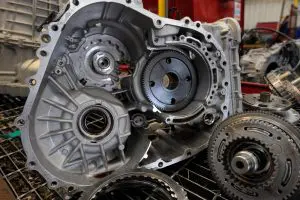Quality assurance is very important when it comes to die casting processes. Which is why there is a need for die casting product testing and quality control as it helps ensure that products are free of defects and meet the necessary standards. There are several different tests and procedures that can be used to assess the quality of die castings. These include dimensional tolerances, mechanical testing, visual inspection, and more. By ensuring that products meet these quality standards, companies can avoid costly recalls or customer complaints. There are many ways a die cast product can fail, and if those potential issues are not nipped in the bud, they can be very costly.
Table of Contents
Die Cast Failure Types
Some die cast failure possibilities include:
1. Porosity
Porosity is the result of gas entrapment during the casting process. Gas bubbles can get trapped in the molten metal for a number of reasons, these include improper venting of the mold due to bad design, impurities in the metal, or incorrect melting temperature. Porosity can weaken the structural integrity of the die cast product and lead to failure.
2. Cold Shuts and Hot Tears
Cold shuts and hot tears are another two types of die cast failures. Cold shuts happen when the molten metal does not flow evenly into the mold, causing a seam or line in the finished product, while hot tears happen when the molten metal solidifies too quickly, causing it to crack or tear.
3. Leaking Castings
Castings can leak for a variety of reasons, these include worn dies and porosity. To test for leaking, the parts are submerged underwater in a dunk tank for a specified time and pressure, if air bubbles are found around a specific area, this indicates a leak. This is a widely used non-destructive testing method for location of leaks.
4. Dimension Issues
Some parts may not conform to expected dimensions because of wear in the die casting dies, improper design of the dies, or because the metal has not been filled properly into the die. The quality assurance team must always ensure that the dimensions of the castings are strictly adhered to in order to achieve near net shapes.
5. Trimming Issues
If there is excess material left on die cast parts, this would be a problem as it indicates poor die cast maintenance. Visually, it would be easy to determine if a part has a trimming issue. However for parts that have less discernible trim problems, you will need to use a coordinate measuring machine to check for dimensional accuracy.
Why Quality Matters
Product testing for quality control and assurance can be effective if done properly. It is highly important as it prevents you from shipping defective products to your customers. This can be very damaging to your organisation’s reputation. Also, it will cause you to lose money from having to do a refund or replace the products. As such, always choose an experienced service provider with an effective quality control system in place, as they will help spot and rectify any defects before your products are being shipped out.
Choose EKO for Your Die Casting Needs
There are many factors to consider when choosing a die casting service provider, but quality control should always be one of the most important. Here at EKO Industries, we believe strongly in the importance of quality assurance. Our quality control process includes a number of steps, from initial inspection of raw materials to final testing of finished products. We also perform regular audits of our facilities and processes to ensure that they are up to par. This attention to detail ensures that our customers receive only products of the highest standards in quality. Contact us today to find out more about our die casting process or some of our other manufacturing capabilities today.



